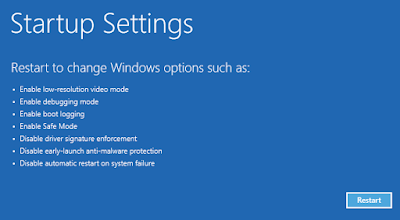Exp.CVE-2018-4987
Exp.CVE-2018-4987 Deletion: Quick Steps To Delete Exp.CVE-2018-4987 Successfully
Errors generated by Exp.CVE-2018-4987 0x8024CFFF WU_E_DRV_UNEXPECTED A driver error not covered by another WU_E_DRV_* code. , 0xf0809 CBS_E_ARRAY_ELEMENT_MISSING attempt to get non-existent array element, 0x00000072, 0x0000006A, 0x80245001 WU_E_REDIRECTOR_LOAD_XML The redirector XML document could not be loaded into the DOM class., 0x8024DFFF WU_E_SETUP_UNEXPECTED Windows Update Agent could not be updated because of an error not covered by another WU_E_SETUP_* error code. , 0x80240019 WU_E_EXCLUSIVE_INSTALL_CONFLICT An exclusive update cannot be installed with other updates at the same time., 0x80242012 WU_E_UH_UNEXPECTEDCBSRESPONSE The update handler has received an unexpected response from CBS., 0x80244000 WU_E_PT_SOAPCLIENT_BASE WU_E_PT_SOAPCLIENT_* error codes map to the SOAPCLIENT_ERROR enum of the ATL Server Library., 0x8024C002 WU_E_DRV_NOPROP_OR_LEGACY A property for the driver could not be found. It may not conform with required specifications., 0x00000108, 0x000000EB, 0x00000063, 0xf0807 CBS_E_NOT_INSTALLABLE the component referenced is not separately installable, 0x80249001 WU_E_INVENTORY_PARSEFAILED Parsing of the rule file failed., 0x80246008 WU_E_DM_FAILTOCONNECTTOBITS A download manager operation failed because the download manager was unable to connect the Background Intelligent Transfer Service (BITS).Easy Steps To Delete Exp.CVE-2018-4987 From Infected System
Exp.CVE-2018-4987 is detected as a perilous System threat which can harm your System data and files very badly. It intrudes your System silently and secretly so that you will not identify its presence easily and it can spread itself as much as possible. It can corrupt your data and make it inaccessible. Moreover, it can cause your System to degrade its performance and applications to respond slowly.
You can infect your System in many ways like when you open a spam email, visit some unknown and untrusted site, clicking malicious ads or pop-ups and many other ways. But one important method used by Exp.CVE-2018-4987 is bundling method in which it gets installed directly with the installation of free downloads. On its arrival into the system, it can almost disturbs the internal settings and functioning of the System. Hence, if you find such malware into the System, you need to Delete it.
Guide 1 : Get Rid Of Exp.CVE-2018-4987 From Chrome In System
Guide 2 : Get Rid Of Exp.CVE-2018-4987 From Control Panel In System
Guide 3 : Get Rid Of Exp.CVE-2018-4987 From Registry Entry In System
Guide 4 : Get Rid Of Exp.CVE-2018-4987 From Task Manager In System
Guide 5 : Guides To Start System In Safe Mode
Simple Steps To Effectively Delete Exp.CVE-2018-4987 From Your System
Guide 1 : Get Rid Of Exp.CVE-2018-4987 From Chrome In System
From Internet Explorer -
- Click on Gear icon to open Tools menu in the Internet Explorer window.
- Click on Manage Add-ons option.
- Goto Toolbars and Extensions tab.
- Locate Exp.CVE-2018-4987 related add-ons - > Disable button.
- Click More information button and finally click on Delete button to completely Delete Exp.CVE-2018-4987.

From Google Chrome -
- At first, launch the Google Chrome browser.
- Click on gear icon present in your browser to open Chrome menu.
- Click on Tools option.
- Click on Extension.
- Select all unwanted extensions.
- Click on trash bin icon to Delete Exp.CVE-2018-4987.

From Mozilla Firefox -
- Click on the Menu icon present at the top right corner of the browser.
- Select Add-ons option.
- In the Add-ons window, choose the Extensions or Appearance panel.
- Select add-on related to Exp.CVE-2018-4987 which you want to Delete.
- Click the Remove button.
- Click Restart if it asks.

From Microsoft Edge -
- Click on More (...) icon and click Settings then.

- Now, select A specific page or pages under the Open with option.
- Again, select Custom option.
- Type the URL of the page you want to set as your browser's default homepage.

Guide 2 : Get Rid Of Exp.CVE-2018-4987 From Control Panel In System
For Windows XP
- Click on Start button and click Control Panel.

- Select Add or Remove Programs option.

- Find and Delete Exp.CVE-2018-4987 related programs in the window that appears.

For Windows 7
- Press Window key present on the keyboard.

- Click Control Panel option from the menu.

- A Control Panel window appears from where click on Programs option.

- Select executable file of Exp.CVE-2018-4987.
- Click on Uninstall option.

For Windows 8
- Open run box by pressing Window+R keys together.

- Type control panel and hit Enter key.

- Click on Delete a Program.

- Then select all the programs related to Exp.CVE-2018-4987.
- Click Uninstall option.

For Windows 10
- Click on Start button.
- Select Settings option present in the bottom left corner of the screen.

- Select System option under Setting.

- Click on App & Features option.

- Now, Delete all the unwanted program.

Guide 3 : Get Rid Of Exp.CVE-2018-4987 From Registry Entry In System
- Press 'Windows+R' keys to open Run box.
- Type 'regedit' in the box and click OK button.

- Find out Delete all the registry files related to Exp.CVE-2018-4987.
HKEY_LOCAL_MACHINESystemCurrentControlSetServicesWpm
HKEY_CURRENT_USERSoftwareMicrosoftInternet ExplorerMain “Default_Page_URL”
HKEY_LOCAL_Machine\Software\ClassesExp.CVE-2018-4987
HKEY_CURRENT_USER\Software\Microsoft\Windows\CurrentVersion\Run “.exe”
HKCU\Software\Microsoft\Windows\CurrentVersion\Internet Settings\random
HKEY_LOCAL_MACHINE\SOFTWARE\Microsoft\Windows\CurrentVersion\run\random
HKEY_CURRENT_USER\Software\Microsoft\Windows\CurrentVersion\Internet Settings “CertificateRevocation” = ’0
Guide 4 : Get Rid Of Exp.CVE-2018-4987 From Task Manager In System
- Press Alt + Ctrl + Delete keys altogether to open task manager.

- In the window, click on Process tab.
- Select the unwanted processes running.

- Click on End Process.
Guide 5 : Steps To Start System In Safe Mode
In windows XP/Vista/7 -
- Click on Start icon.
- Place the mouse on Shutdown button and then click on Restart button.

- Keep pressing F8 button when the System starts booting-up.
- Select 'Advance boot menu' present on the screen.

- Select 'Safe Mode With Networking' option and press Enter key.

In windows 8/10 -
- Click on Start button and press Shift key at the same time.

- Click on Restart button and click Troubleshoot option.

- Click on 'Advanced option' -> Startup Settings.

- Choose 'Enable Safe Mode' option from the given list and click on Restart.

- Press F5 button to choose 'Safe Mode With Networking' mode.


No comments:
Post a Comment